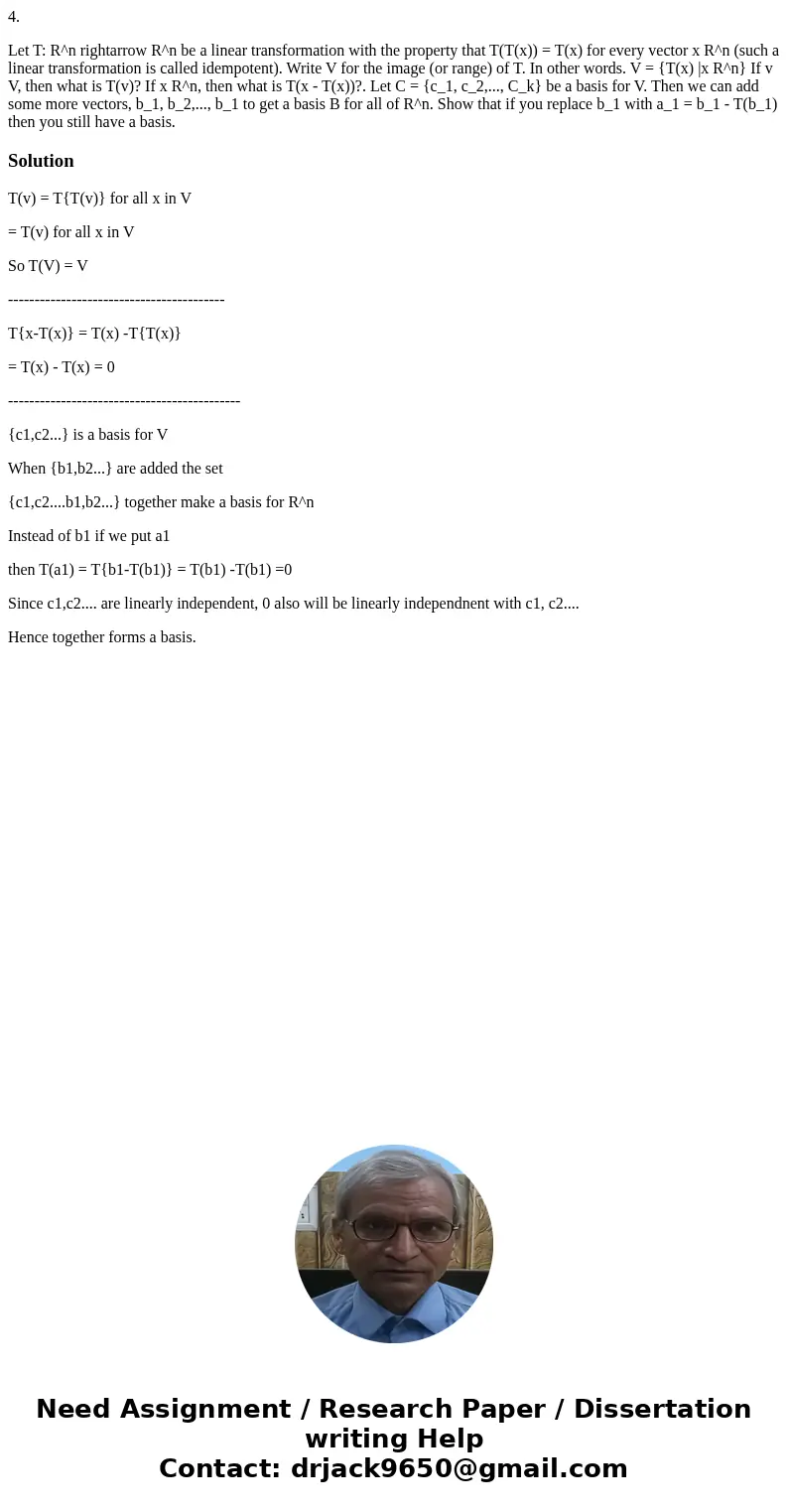4 Let T Rn rightarrow Rn be a linear transformation with the
4.
Let T: R^n rightarrow R^n be a linear transformation with the property that T(T(x)) = T(x) for every vector x R^n (such a linear transformation is called idempotent). Write V for the image (or range) of T. In other words. V = {T(x) |x R^n} If v V, then what is T(v)? If x R^n, then what is T(x - T(x))?. Let C = {c_1, c_2,..., C_k} be a basis for V. Then we can add some more vectors, b_1, b_2,..., b_1 to get a basis B for all of R^n. Show that if you replace b_1 with a_1 = b_1 - T(b_1) then you still have a basis.Solution
T(v) = T{T(v)} for all x in V
= T(v) for all x in V
So T(V) = V
-----------------------------------------
T{x-T(x)} = T(x) -T{T(x)}
= T(x) - T(x) = 0
--------------------------------------------
{c1,c2...} is a basis for V
When {b1,b2...} are added the set
{c1,c2....b1,b2...} together make a basis for R^n
Instead of b1 if we put a1
then T(a1) = T{b1-T(b1)} = T(b1) -T(b1) =0
Since c1,c2.... are linearly independent, 0 also will be linearly independnent with c1, c2....
Hence together forms a basis.

 Homework Sourse
Homework Sourse